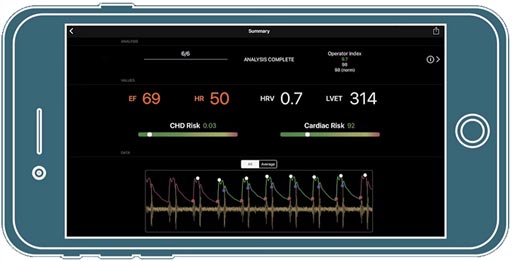Smartphone App Offers Alternative to CV Ultrasound Scan
By MedImaging International staff writers
Posted on 13 Sep 2017
The results of a clinical trial have shown that a new smartphone application, together with the phone’s camera, can be used to effectively measure blood-flow pressure waveforms in the cardiovascular system.Posted on 13 Sep 2017
The technique that provides detailed information about cardiac health, involves simply holding a smartphone over the neck of the patient for one or two minutes. This compares with a 45-minute echocardiography ultrasound scan, or a costly Magnetic Resonance Imaging (MRI) scan for measuring the Left Ventricular Ejection Fraction (LVEF).

Image: A new study has shown that a new smartphone app, together with the phone’s camera, can be used to effectively measure blood-flow pressure waveforms in the CV system (Photo courtesy of RD Mag).
The results of the proof-of-concept clinical trial were published by researchers from the California Institute of Technology (Caltech), Huntington Medical Research Institute (Pasadena, CA, USA) and the University of Southern California (USC; Los Angeles, CA, USA), in the July 2017 issue of the journal Critical Care Medicine.
The new technique measures how much the carotid artery displaces the skin on the neck during a heartbeat, and infers the cardiac LVEF. The study included 72 volunteer patients all of whom underwent the smartphone LVEF exam, followed by an MRI LVEF exam. The data from both exams were compared, and showed a margin of error for the smartphone exam that was less than that for LVEF using echocardiography. The technique could also be used in the future to diagnose aortic stenosis, coronary artery blockages, and other heart valve diseases.
Senior author of a paper on the study, Mory Gharib (PhD '83), Caltech, said, "In a surprisingly short period of time, we were able to move from invention to the collection of validating clinical data. What is exciting about this study is that it shows our technique is as accurate as echocardiography at estimating LVEF when both are compared to the gold standard of cardiac MRI. This has the potential to revolutionize how doctors and patients can screen for and monitor heart disease both in the U.S. and the developing world."
Related Links:
California Institute of Technology
Huntington Medical Research Institute
University of Southern California














